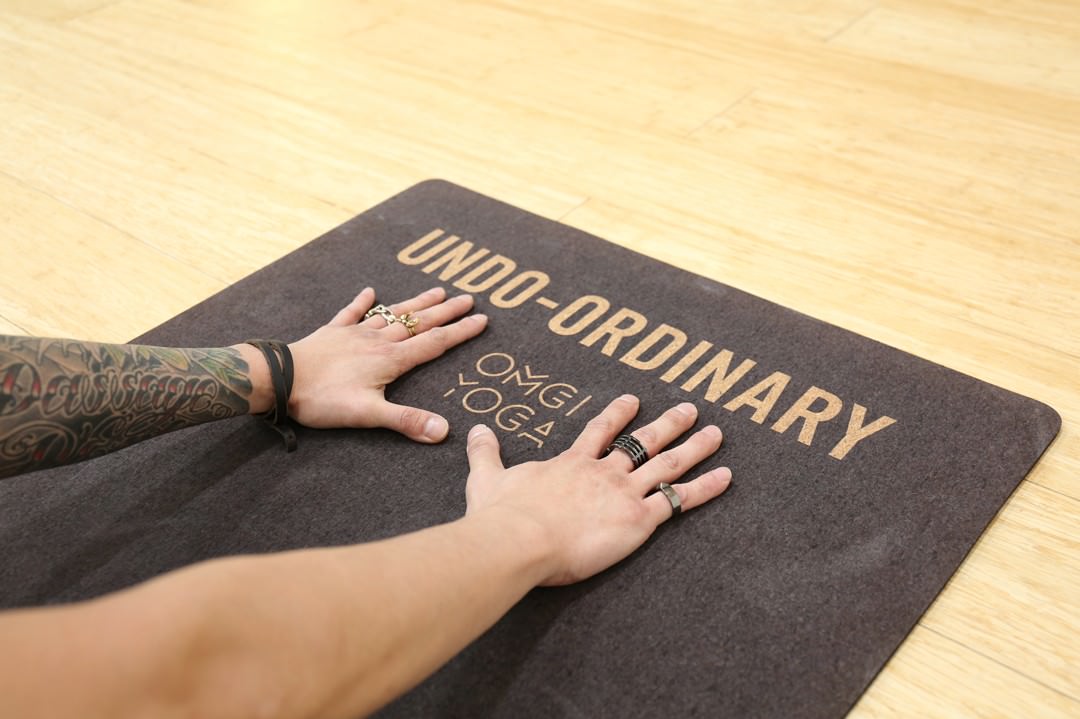The following article is Part I of a two-part series on the history & future of tennis in America. Catch Part II here.
[dropcap size=big]D[/dropcap]ance is an art form. It is an aesthetically driven pursuit, motivated by the expression of the soul, performed by the body in motion.
"For me, dance most simply put, is an outward expression of my inner thoughts and emotions and a way to let off the tensions of day-to-day life. " says Alex Klarer, a Colorado dancer with over 15 years of experience in tap, jazz, modern, ballet, pointe, and hip hop.
Whether it be the hip-hop behind Beyonce's Lemonade or Adolphe Adam's romantic ballet, Giselle, the themes within dance confirm Alex's sentiments. Whether it be the theatrics upheld within traditional ballet storytelling or the more abstract themes that resonate with today's modern choreographers, dance is an artistic, symbolic and emotive transmission of the human experience through the movement of the body. Faith, fear, greed, hate, loss, courage, pride, revenge, heroism and most prominently — love — are all expressed within the spinning pirouettes of the passionate pad de deux — a partnered dance between two of the ballet's main principals, often considered to be the pièce de résistance of the performance.
 Unlike dance, whose merit is based on the ability to perform a relatable experience to its audience, tennis is a sport. Its merit is reliant upon a victor. In tennis, the term "love" truly means nothing between the two main players on court. When two players achieve the scoring term "love" within a set, they've essentially gained nor lost a point in relation to the score. Interestingly, love's emotive homonym strikes an eerily similar discourse, along with other displays of expression. But this vacancy of passion comes at a cost for a game whose origins are rumored to predate the last two Millennia, and who is looking to revamp its image with the "people".
Unlike dance, whose merit is based on the ability to perform a relatable experience to its audience, tennis is a sport. Its merit is reliant upon a victor. In tennis, the term "love" truly means nothing between the two main players on court. When two players achieve the scoring term "love" within a set, they've essentially gained nor lost a point in relation to the score. Interestingly, love's emotive homonym strikes an eerily similar discourse, along with other displays of expression. But this vacancy of passion comes at a cost for a game whose origins are rumored to predate the last two Millennia, and who is looking to revamp its image with the "people".
Tennis is known to be a reserved yet compelling sport at best, and an elitist and exclusive social club at worst. Challenging the mores of the tennis - which include players calling out an empire's bad call, 'emotional' outbursts, self-praise, noise, disruptive fashion trends, and most unfortunately, the lack of diversity on the tennis court, are still considered to be disruptive controversies within the current tennis scene.
Much of this current culture is embedded in the sport's history. Though rumored to have rudimentary origins in locations as diverse as Egypt and Greece, tennis' modern reserved - and at times - elitist nature can be attributed most notably, to the French and British aristocracy of the 15th century, who popularized and carried the game throughout the centuries and into the closely enforced etiquette of the modern era. The connotation that tennis is a sport for the elite still holds true today...mostly because it is true.
 Tennis has recognized this in the past and made moves in the 70s and 80s to modernize the sport. However, since then it has gone from baseline to baseline in an existential battle between remaining within the lines of its' traditional reserved and aloft nature, or moving to modernize its appeal. Despite the sport's efforts to find a middle ground, its aloft legacy remains and at times, continues to blindly perpetuate inaccessibility to the masses. High ticket prices and expensive equipment/participation fees are just a few examples of what is limiting wide-range engagement and why the sport continues to remain out of reach - and perhaps most importantly, unrelatable- to a larger audience.
Tennis has recognized this in the past and made moves in the 70s and 80s to modernize the sport. However, since then it has gone from baseline to baseline in an existential battle between remaining within the lines of its' traditional reserved and aloft nature, or moving to modernize its appeal. Despite the sport's efforts to find a middle ground, its aloft legacy remains and at times, continues to blindly perpetuate inaccessibility to the masses. High ticket prices and expensive equipment/participation fees are just a few examples of what is limiting wide-range engagement and why the sport continues to remain out of reach - and perhaps most importantly, unrelatable- to a larger audience.
Because of this, tennis is still trying to find its place within the American masses. It has yet to embed itself into our sports culture the way football has claimed American Sundays or how basketball has become synonymous with Air Jordans, March Madness, and the Dream Team. Unlike tennis, these sports have won favor in American culture because they have, in part, grown free from the legacy of decorum and pristine of the old aristocratic world and have taken on the new, self-determined, bootstraps personality ingrained into American culture: an attitude that has paved the way to create more accessible athletics opportunities to a larger, more diverse audience. An audience who doesn't adhere to the same social codes or live in the same tax bracket as the more traditional pedestrian tennis enthusiast.
 Though tennis has become more inclusive within the last 30 years, the reserved nature of the game still lingers somewhere between the toss and the serve. A point is a point whether it is executed with grace (Federer), grit (Nadal), flare (Kyrgios) or humble gratitude (Murray, ever the gentleman's gentleman...US Open umpire rumble aside). This makes the sports culture of tennis fine for some. Yet as numbers reveal, excluding Serena and Venus Williams (who have carried the sport for the past decade in America, despite what Indian Wells Tennis Garden CEO thinks) most U.S. audiences find the relatability of the sport to be an occasional and incidental occurrence.
Though tennis has become more inclusive within the last 30 years, the reserved nature of the game still lingers somewhere between the toss and the serve. A point is a point whether it is executed with grace (Federer), grit (Nadal), flare (Kyrgios) or humble gratitude (Murray, ever the gentleman's gentleman...US Open umpire rumble aside). This makes the sports culture of tennis fine for some. Yet as numbers reveal, excluding Serena and Venus Williams (who have carried the sport for the past decade in America, despite what Indian Wells Tennis Garden CEO thinks) most U.S. audiences find the relatability of the sport to be an occasional and incidental occurrence.
The lack of new personalities within tennis has been especially crippling in gaining larger mass appeal with audiences. In a media and digitally driven sports culture that thrives on disruptive, stand out personalities, it's clear Americans want a sports star we can relate to even when she or he falters (cue Ryan Lochte). We want a narrative to live vicariously through whether it be on the court, on the television, on twitter, on Instagram, and as of late, Snapchat. We want stories of faith, fear, greed, loss, courage, pride, revenge, victory, heroism, and yes, even love. Our desire is apparent in the numbers: when celebrity athletes do something compelling, human and relatable, the numbers jump up ...as do the followers and the endorsement deals. In spite of the emphasis of dominance and ultimate victory within sports, we love the game and the heroes within them because of the stories that underly each pursuit, each power-play, journey, loss, and triumph. However, in a tennis culture that doesn't allow for outward displays of personality or passion, the sport continues to struggle to find its footing and to obtain a larger portion of America's billion dollar sports industry.
 Whatever combination of reasons tennis isn't necessarily catching on with American audiences, it's a bit of a shame. The sport itself is incredible to both watch and play. In particular, it can give athletes a fun, all-around workout that helps improve strength, flexibility, agility, speed, conditioning, power, balance, control and coordination. Even Vouge Magazine, which isn't exactly the epitome of athletic commentary, has noted this point, calling tennis 'the ultimate body sculpting sport' and running an article that - models and artistry aside - does nice job in conveying how fit and overall conditioned you have to be to play the game.
Whatever combination of reasons tennis isn't necessarily catching on with American audiences, it's a bit of a shame. The sport itself is incredible to both watch and play. In particular, it can give athletes a fun, all-around workout that helps improve strength, flexibility, agility, speed, conditioning, power, balance, control and coordination. Even Vouge Magazine, which isn't exactly the epitome of athletic commentary, has noted this point, calling tennis 'the ultimate body sculpting sport' and running an article that - models and artistry aside - does nice job in conveying how fit and overall conditioned you have to be to play the game.
Most importantly, the stories that sports fans crave are still there, hidden behind the billionth backstroke at the thousandth practice session, or an umpire's request for "quiet please" before a game-winning point. But to find out where these stories are, you cannot follow the culture of tennis or the commentary behind it. You have to follow the body.
Check out UNDOOrdinary.com Sunday, September 11th for Part II of the UNDOxUS Open series.




